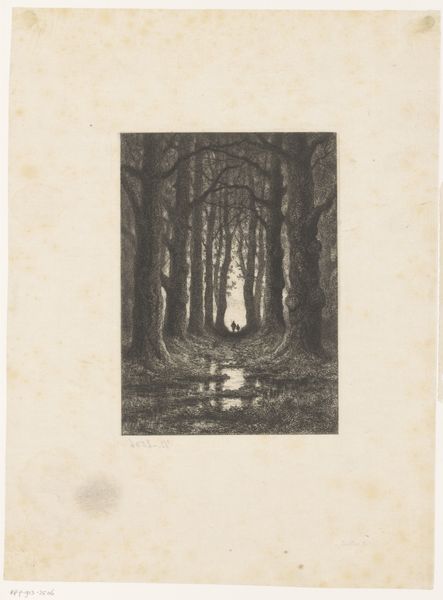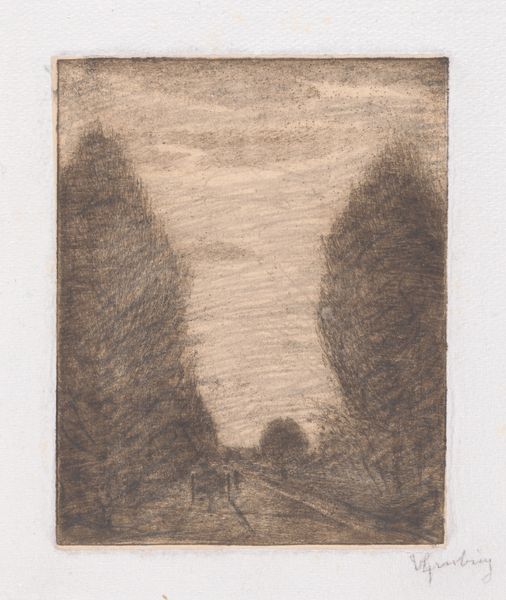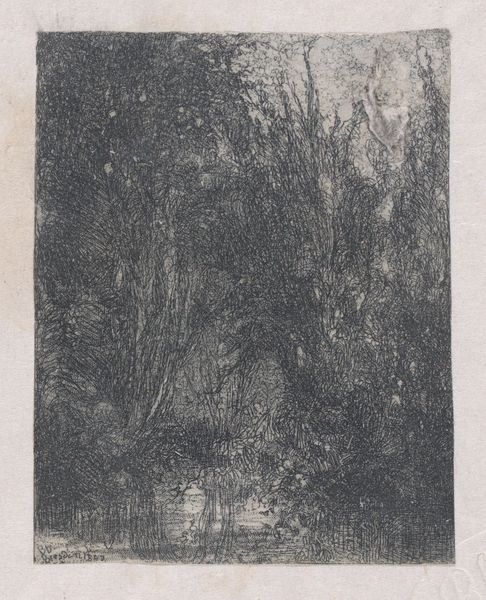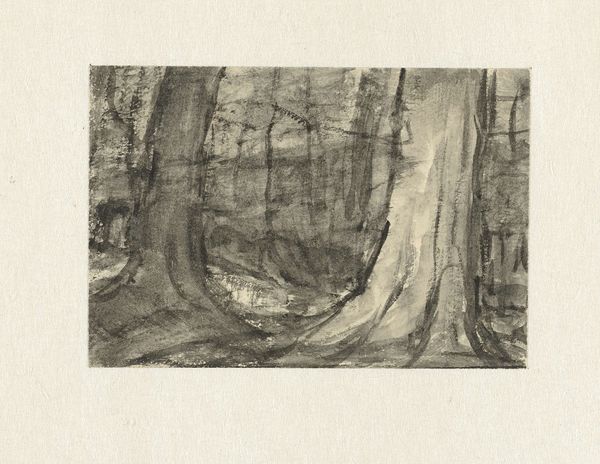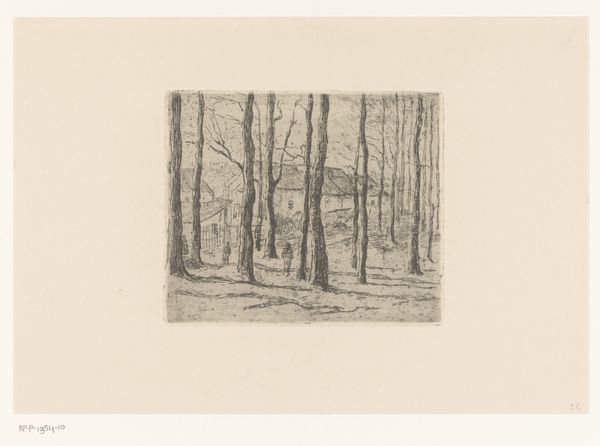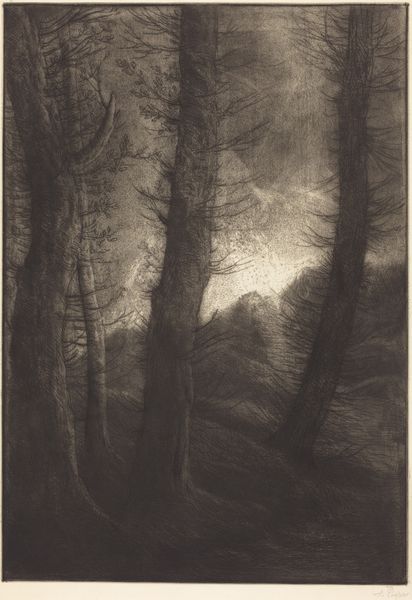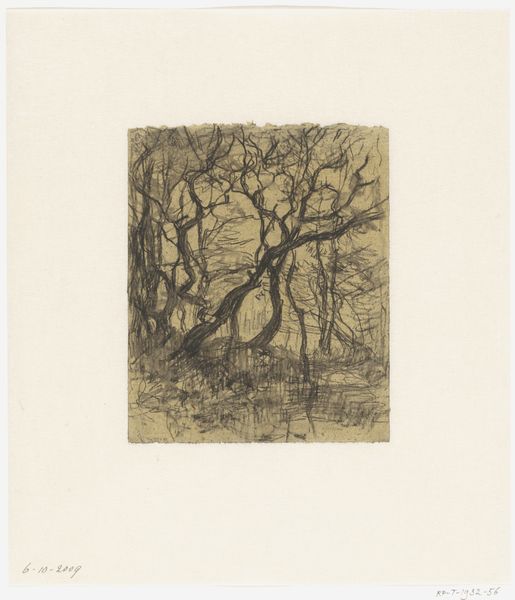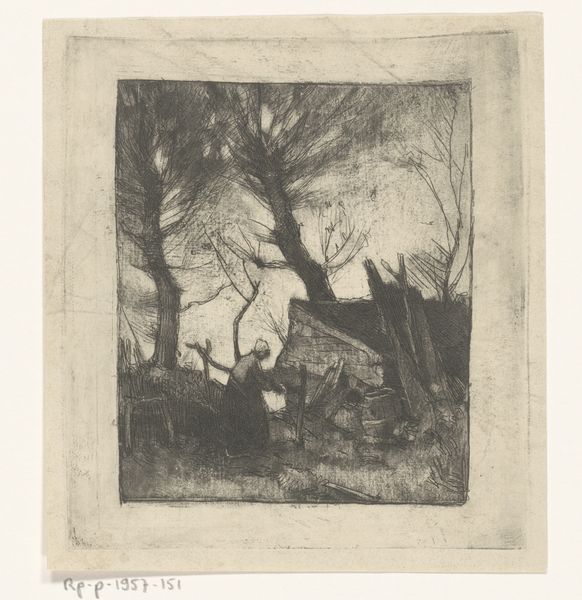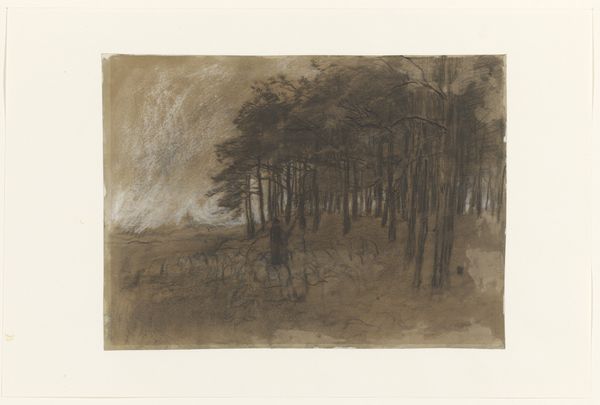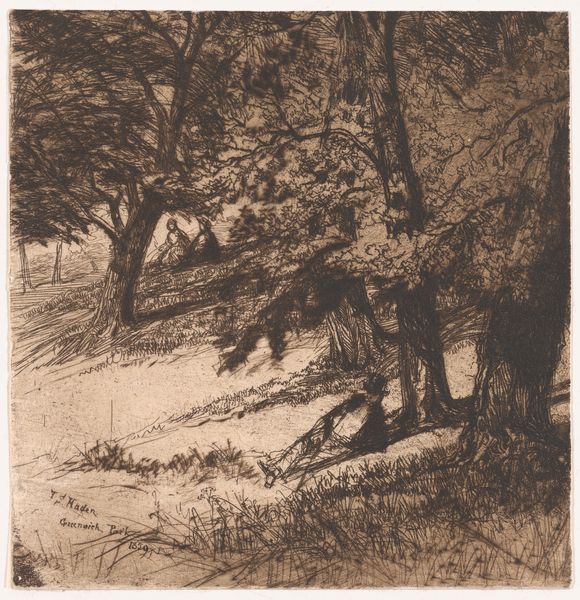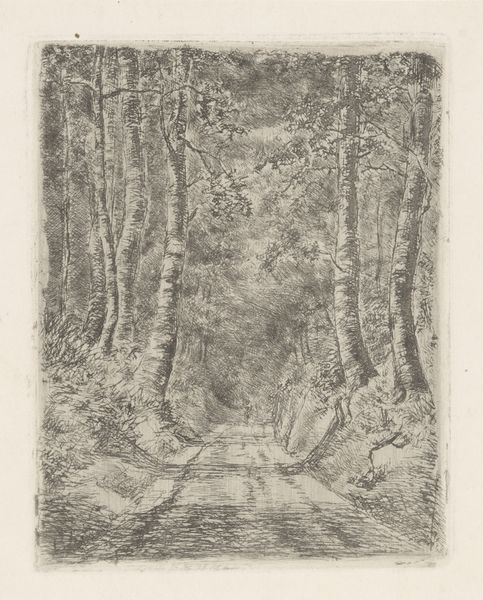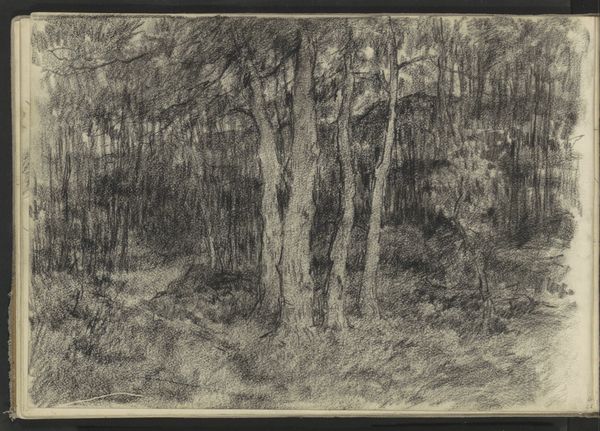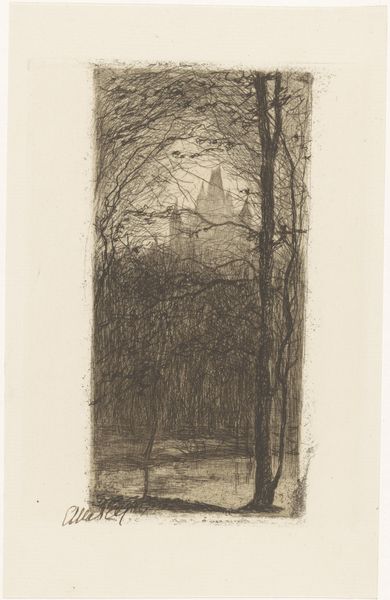
Dimensions: plate: 14.9 × 10.5 cm (5 7/8 × 4 1/8 in.) sheet: 26.7 × 22.3 cm (10 1/2 × 8 3/4 in.)
Copyright: National Gallery of Art: CC0 1.0
Vittore Grubicy made this print, *Stream in the Woods*, using etching – a process where lines are incised into a metal plate with acid, then inked and pressed onto paper. Now, etching is a decidedly indirect way of image-making. Grubicy would have coated his plate with a waxy ground, drawn through it with a needle, and then submerged the plate in acid. The longer it sat, the deeper the lines, and the darker they’d appear in the final print. It’s a far cry from directly capturing the forest scene before him. This painstaking process, typical of printmaking, lends a unique character to the image. The dense network of lines creates a moody atmosphere, typical of its time. Notice how the labor-intensive etching process echoes the dense, complex reality of the woods themselves. The finished print, like the forest, is the product of time, pressure, and a deliberate ordering of elements. This etching challenges our notions of what art is – moving it away from singular acts of genius and toward skilled, time-intensive processes.
Comments
No comments
Be the first to comment and join the conversation on the ultimate creative platform.
